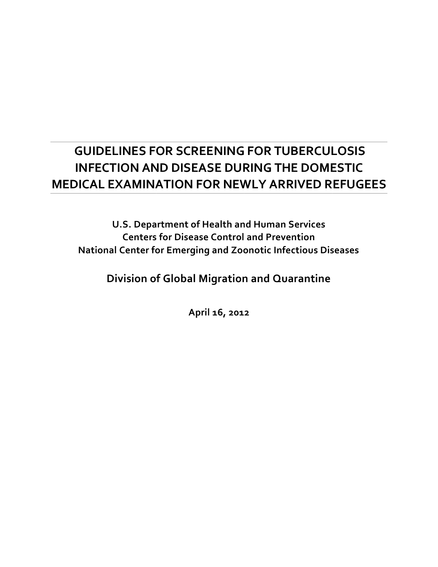Guidelines for screening for Tuberculosis infection and disease during the domestic medical examination for newly arrived refugees
Division of Global Migration <span class="attribute-to-highlight medbox">and</span> Quarantine
April 16, 2012


